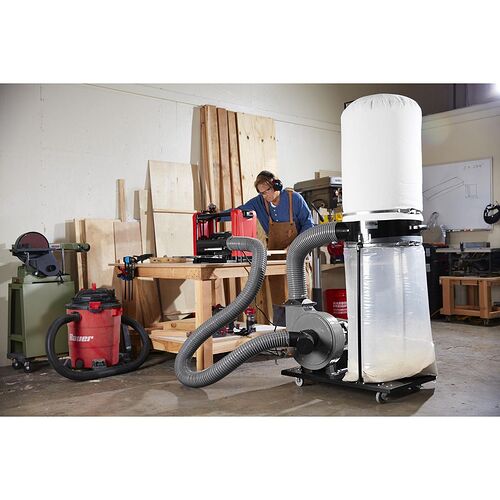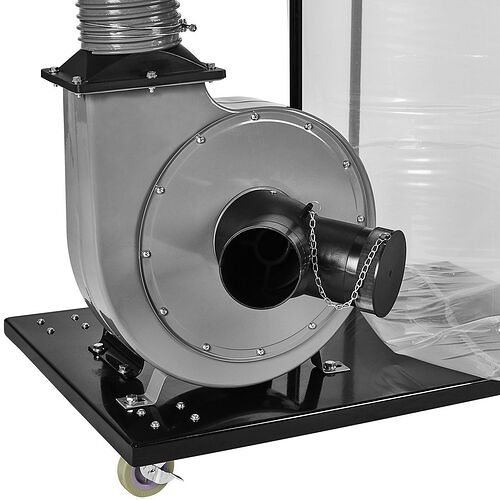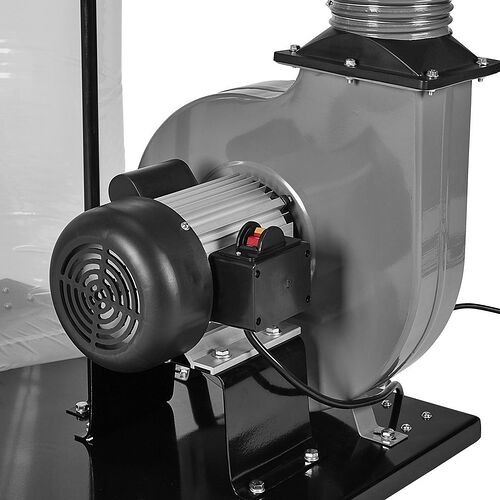Just came across this on youtube. i know many have had posts on dust collection diy. This is confusimg to me as it is pushing and not sucking the dust/chips! They only show the use of the seperator, not the collection device!!
if you watch the video he referenced you can see it better. And it is sucking. blowing would be almost imposible
I just finished watching his video.
first your blow theory is because he has it on the exhaust side of his dust collector. That only works with the big dust extraction blowers not a shop vac. This is his workflow set up:
work being done —> hoses and piping → blower fan from dust collector → his separators then filter
I would first change that lay out all together. ESPECIALLY since I work with metal. There is a theory that metal pieces can hit the blower fan and cause a spark or damage to the fan. You can end up with hot metal in a pile of saw dust that can catch fire, orrrrr saw dust suspended in air can cause an explosion of sorts from the rapid burn rate. so first change to his set up would be this work flow
work being done —> hoses and piping → his separators → blower fan from dust collector → exhaust
at this point you could in theory use a shop vac to power the system but I think the static pressure of a vac system would cause more of the particles to get through the system and even possibly suck stuff from the collection buckets. So I would still say you need a dust extraction system similar to this.
With that thing he made between the planer he is using and the blower housing (which is set up wrong to start with but thats later) he should be getting MUCH less exhausted into the bags.
Why these companies all make huge number claims and then instantly reduce the performance is beyond me. So lets fix that first.
That motor has a 6" inlet. and right at the strongest section the break out into to 4" inlets. Volume is everything in these systems.
6" volume 339.3"
4" volume 150.8… even with two 4" 301.6
stop doing this. Run 6" as far as you can. In his example he use 4" inlets and 6" tubes. And that’s why he lost volumetric efficiency vs Harvey. He lost volume.
Next he had that hepa filter. That a huge improvement over the bag filter, but it still restricts the flow of air that blower can exhaust. And if it cant exhaust it cant intake. If we were all working in industrial environments then yes something with a filter is key. But if you are working with wood or mdf or other natural material, why not exhaust that straight outside so it isn’t in your breathing air at all? Then the motor can exhaust the max amount and thus intake the max amount. My planer and jointer blow into a bucket that then gets used as wood chips for my animals. Metal is a bit different but that is where an exhaust filter would come in. You can easily use a ball valve to switch between open exhaust and filtered exhaust when working with metal.
ball valves for dust collection out perform blast gates big time. check out this video
lastly, I would make the exit from that device more tangent to the tube. If you look at this picture of the dust collector, the air is pushed out TANGENT to the blades not straight up.
I’ll end this for now, but that’s my take on the video. The Harvey engineers put a TON of design into their unit and that’s why the massive price tag. Yes it can be done cheaper but we cant over look all the little things that go into a system like that.




